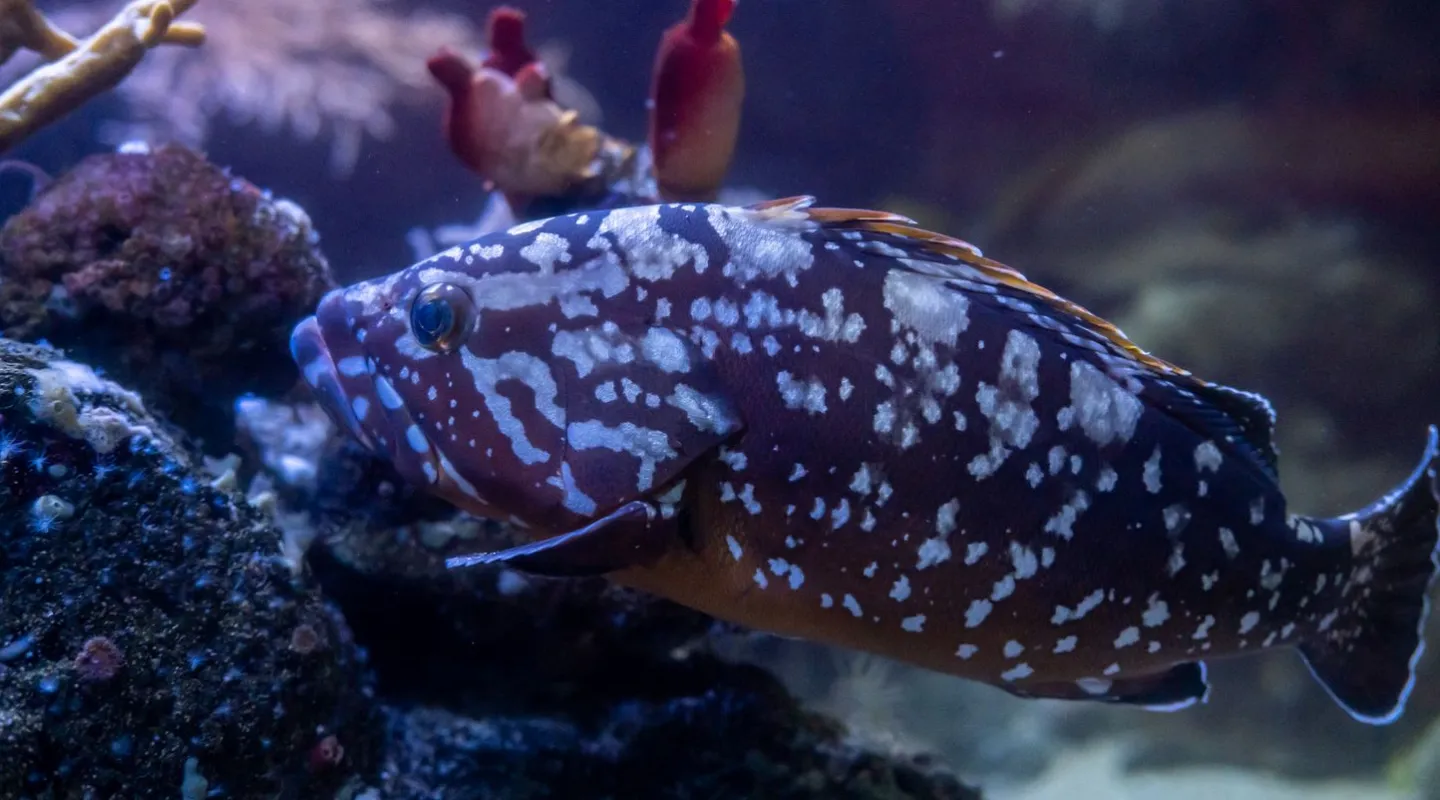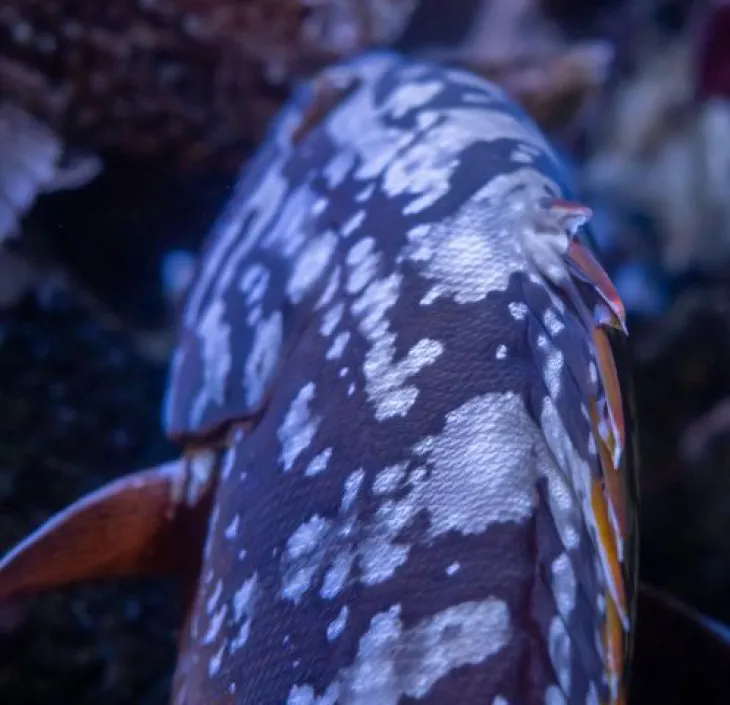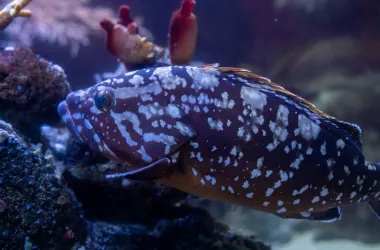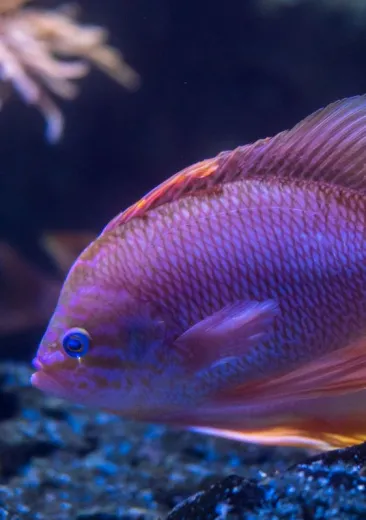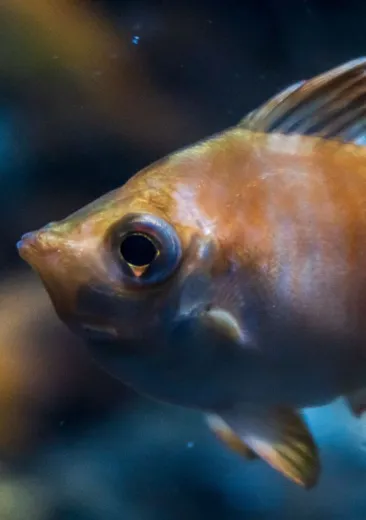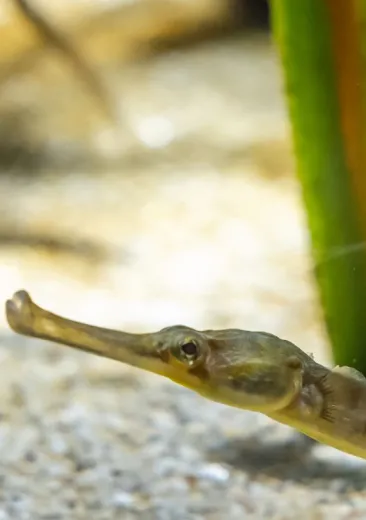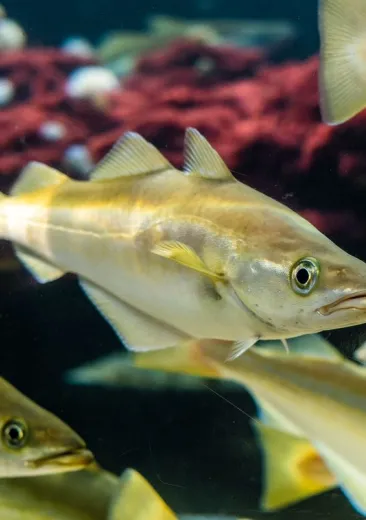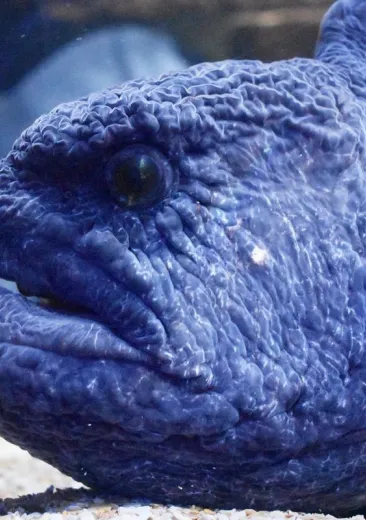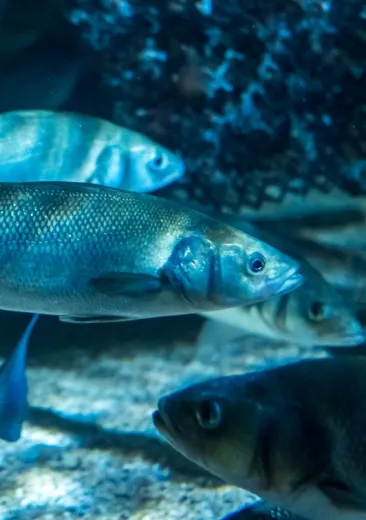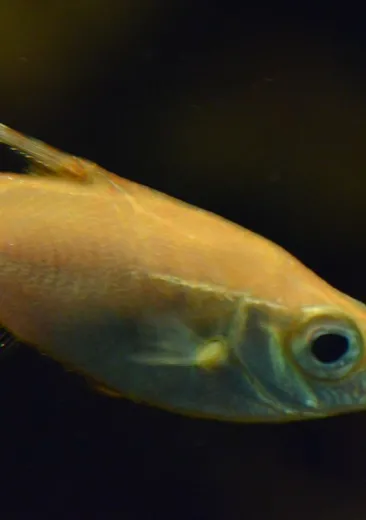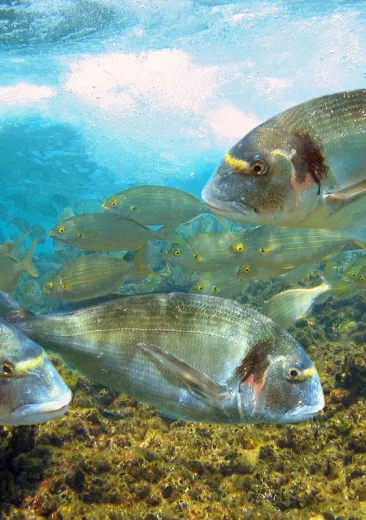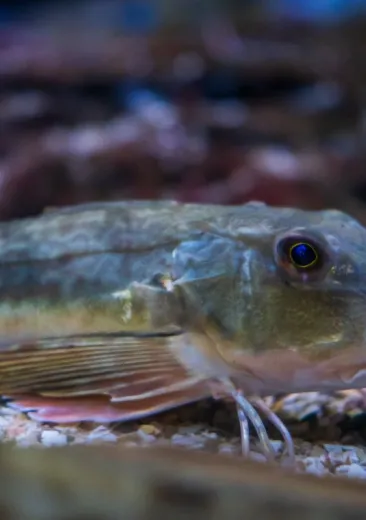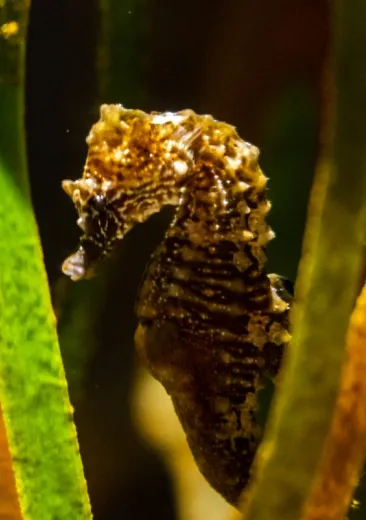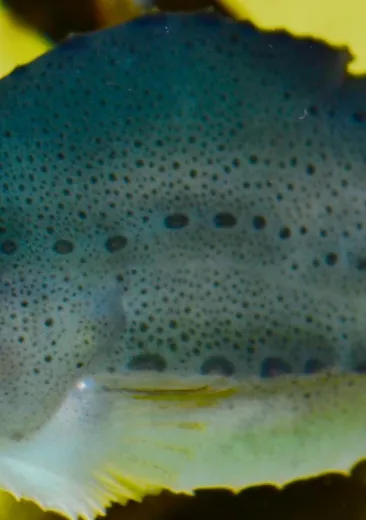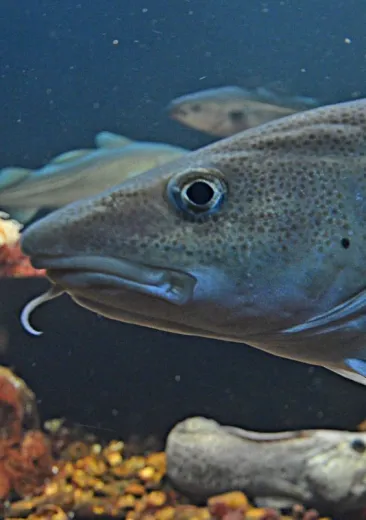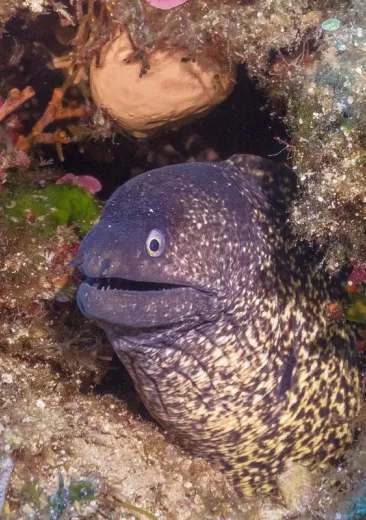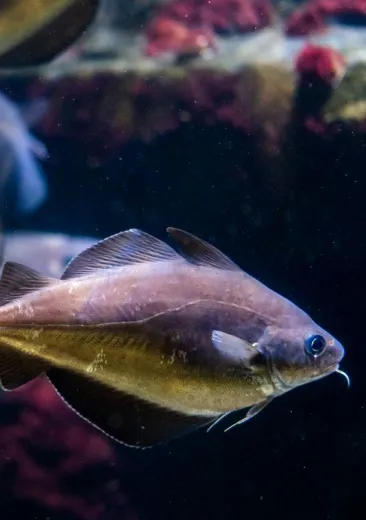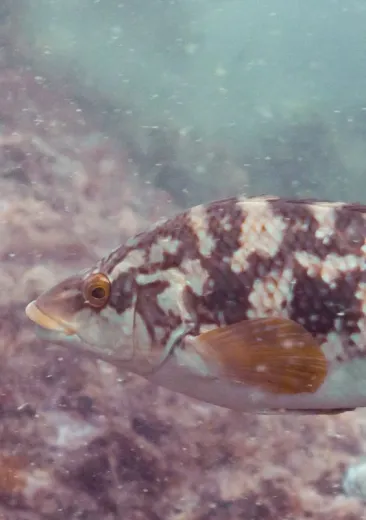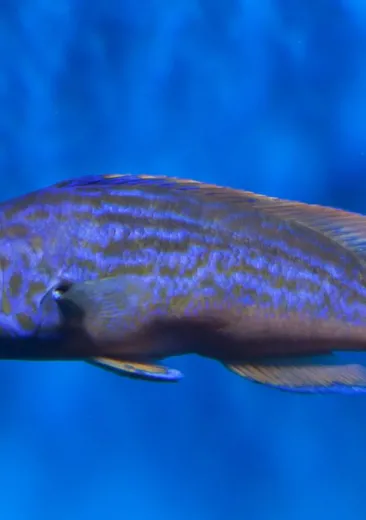From July to September, sexually mature groupers gather in large numbers, a few dozen to hundreds of individuals in rocky areas at a depth of 15 to 30 m. Around the month of August, at nightfall, the groupers gather in courtship and the emission of gametes lasts only a few days. Fertilisation takes place in open water and the eggs are pelagic. They hatch about 40 hours after fertilisation. Larvae start feeding on the third day.
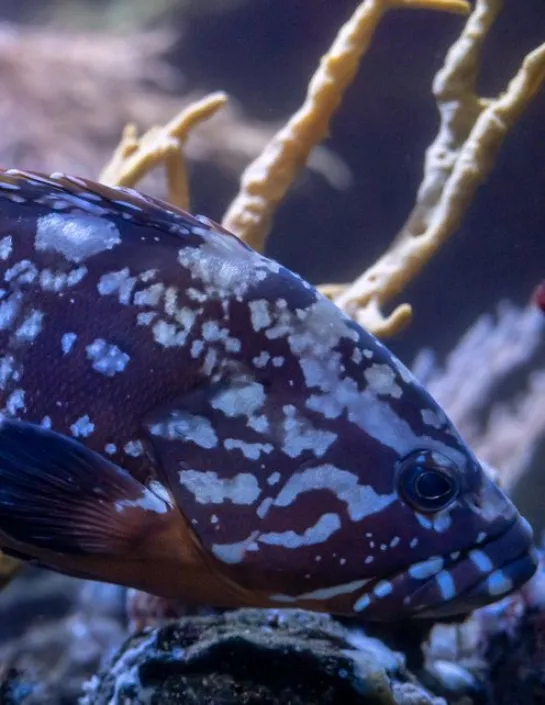
Identity card
Dusky grouper
- Scientific name:
- Epinephelus marginatus
- Family:
- Serranidae
- Class:
- Actinopterygii
- Phylum:
- Chordata
- Year of description:
- Lowe, 1834
- IUCN Status:
- Vulnerable
- Distribution:
-
In the Mediterranean and in the eastern Atlantic.
- Habitat:
-
The dusky grouper lives on uneven rocky seabeds with cavities or caves for shelter.
- Size:
40 to 80 cm, maximum size approximately 140 cm.
- Diet:
-
The dusky grouper feeds mainly on cephalopods (cuttlefish, octopus and squid), crustaceans and fish.
- Longevity:
The largest specimens can live up to 60 years
